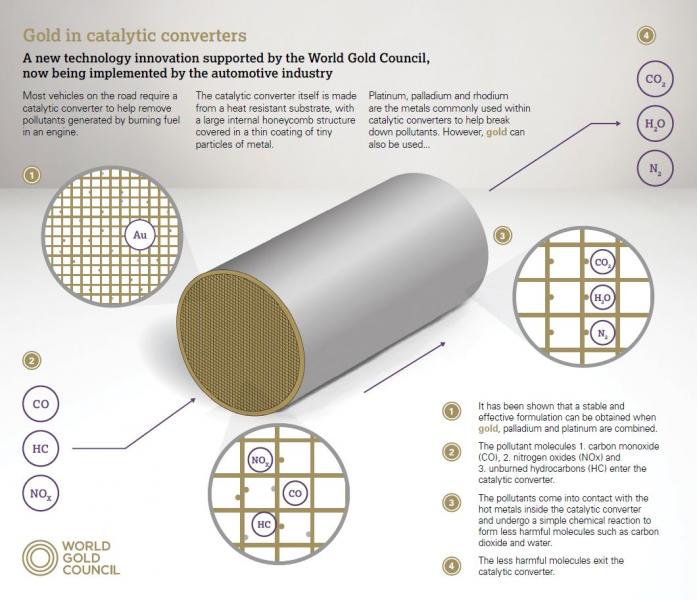Gold nanoparticles could be the solution to a number of pressing environmental concerns.
Catalytic converters
Since the explosion of car ownership in the United States led to concerns about air pollution, catalytic converters have been deployed to reduce the impact of motor vehicles on the environment. Gold can act as a catalyst (a material that accelerates chemical reactions without being consumed in the process) effective in reducing hazardous vehicular emissions.

Read more about how gold catalytic converter technology works.
Renewable energy
Global concerns about fossil fuels’ contribution to climate change have prompted a search for viable alternative energy sources. In addition, gold is becoming an increasingly important component in the development of alternatives to fossil fuels. Gold nanoparticles are being used to improve the efficiency of solar cells, and gold-based materials are showing promise in the search for new, more effective fuel cell catalysts.
Clean groundwater
Groundwater contamination is a common problem around the world in industrialised areas. One of the most efficient and cost-effective ways to manage such pollution is to use specially-designed chemical catalysts, which help to break down contaminants into their component parts. Researchers from Rice University, Stanford University and DuPont Chemicals are using this approach to tackle chlorinated compounds, pollutants which result from a range of industrial activities.
The research, led by Professor Michael Wong at Rice, has developed a gold and palladium catalyst which removes chlorinated compounds from water in laboratory conditions. With World Gold Council support a pilot plant was installed at a polluted site in Kentucky in 2014, and the catalyst was successfully trialed.
source: www.gold.org

